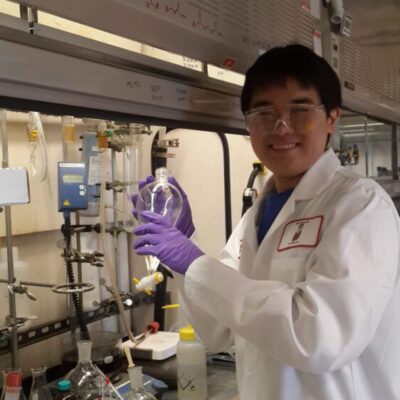Jae Ho Paek L&S Sciences
Development of novel superoxide probes to study function of superoxide in vivo
Reactive oxygen speciesincluding hydrogen peroxide, superoxide, and hydroxyl radicalare commonly blamed for causing a variety of oxidative damages in cell. However, there are scientific papers published that suggest these reactive oxygen species actually play fruitful, not harmful, roles in cells. The increasing need for studying these reactive oxygen species calls for the development of tools that can be used for effectively detecting these reactive oxygen species in vivo. Hydroethidinethe reduced state of ethidium bromide, a common DNA dyeis recognized as a reliable superoxide probe. However, hydroethidine can be much improved by turning it into a targetable or trappable probe inside the cell. This summer, I plan to use Halo, SNAP, and CLIP protein methods to make hydroethidine a targetable probe. Also, I will synthesize different versions of hydroethidine with alkyl chains to see if this makes the probe more trappable in cells.
Message To Sponsor
I've been working in Professor Christopher Chang's lab since the second semester of my sophomore year. I knew that I was going to spend this summer in Berkeley, working on the same project I've worked on ever since I joined the lab. However, financial issues--including rent and others--troubled me. Thanks to the Thye Fund, I can fruitfully use this summer to concentrate on my research.